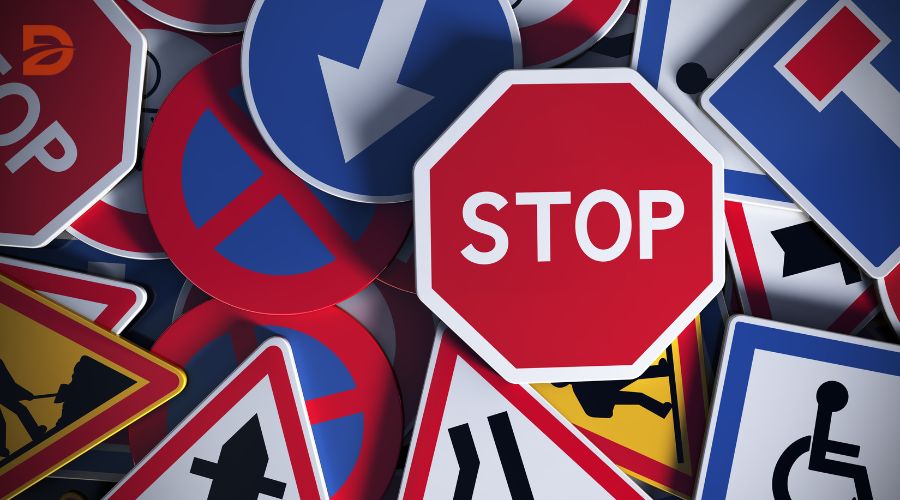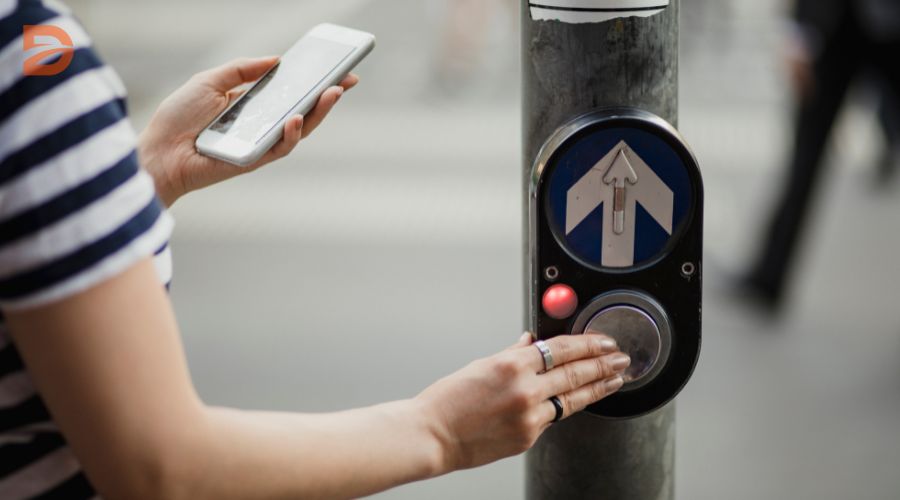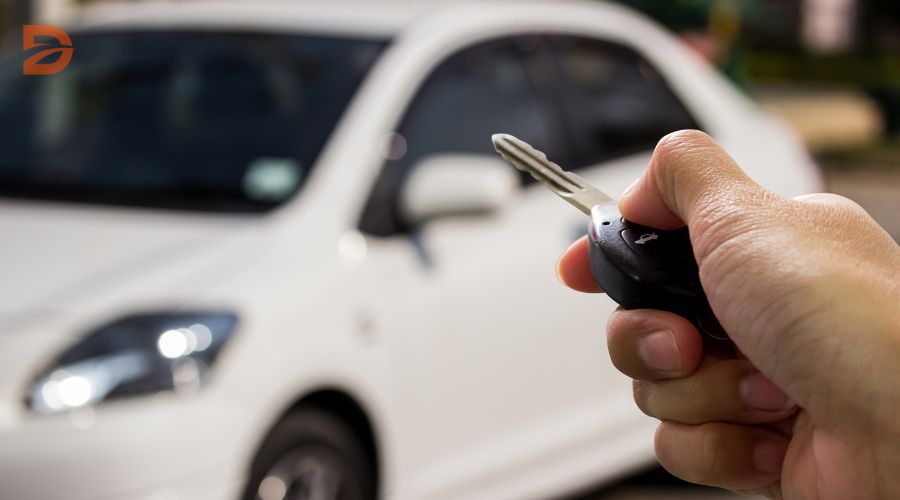Imagine a future where cars, trucks, cyclists, pedestrians, and infrastructure seamlessly exchange real-time data, working together to prevent accidents and optimize traffic flow. This vision is closer to reality than you might think, thanks to a technology known as vehicle-to-everything (V2X) communication. But what exactly is V2X, and how can it transform our roads? Let’s explore the potential of this cutting-edge innovation.
V2X technology enables vehicles to communicate wirelessly with their surroundings, sharing crucial information like speed, position, and road conditions. Safety advocates have long championed the benefits of this technology, and now the U.S. Department of Transportation is rolling out a comprehensive plan to accelerate its deployment nationwide. But will this ambitious roadmap overcome the regulatory hurdles that have hindered progress in the past?
Key Takeaways
- V2X technology allows vehicles, infrastructure, and other road users to exchange real-time data, enhancing safety and traffic efficiency.
- The U.S. Department of Transportation aims to have V2X fully deployed on the National Highway System by 2036 and in major metro areas by a specified year.
- V2X has the potential to prevent thousands of crashes and mitigate the impact of collisions, but its rollout has faced regulatory uncertainty in the past.
- Automakers, such as Audi, Toyota, and Volkswagen, have been working on V2X technology, highlighting its importance for autonomous driving.
- Data privacy and security are crucial considerations for the widespread adoption of V2X technology.
Introduction to V2X Communication
Vehicle-to-Everything (V2X) communication is an advanced technology that enables vehicles to exchange critical information with other vehicles, infrastructure, pedestrians, and networks. This interconnectivity empowers cars to optimize driving conditions, enhance road safety, and pave the way for more intelligent transportation systems.
What is Vehicle-to-Everything (V2X) Technology?
V2X communication leverages wireless networks, such as dedicated short-range communications (DSRC) and cellular V2X (C-V2X), to facilitate real-time data exchange between connected entities. This technology encompasses various interaction modes, including:
- Vehicle-to-Vehicle (V2V): Data sharing between vehicles to prevent collisions and improve driver awareness
- Vehicle-to-Infrastructure (V2I): Information sharing with traffic lights, road signs, and other infrastructure to optimize traffic flow and safety
- Vehicle-to-Pedestrian (V2P): Communication with pedestrians to alert both drivers and pedestrians of potential hazards
- Vehicle-to-Network (V2N): Connection to cellular networks to provide real-time traffic updates and other information services
Different Types of V2X Communication
The V2X industry is divided into two main camps: DSRC-based and C-V2X-based technologies. DSRC, based on the IEEE 802.11p standard, and C-V2X, evolving from LTE-V2X to 5G-V2X, both enable low-latency, reliable data transmission between connected entities. Analysts foresee China’s growing inclination towards C-V2X, with the technology gaining momentum in the global market.
| V2X Communication Type | Description | Key Applications |
|---|---|---|
| Vehicle-to-Vehicle (V2V) | Data sharing between vehicles to prevent collisions and improve driver awareness | Active safety, collision avoidance |
| Vehicle-to-Infrastructure (V2I) | Information sharing with traffic lights, road signs, and other infrastructure to optimize traffic flow and safety | Traffic efficiency, intelligent transportation |
| Vehicle-to-Pedestrian (V2P) | Communication with pedestrians to alert both drivers and pedestrians of potential hazards | Pedestrian safety, vulnerable road user protection |
| Vehicle-to-Network (V2N) | Connection to cellular networks to provide real-time traffic updates and other information services | Information services, emergency response |
As the V2X ecosystem continues to evolve, it promises to revolutionize the way we approach transportation, making our roads safer, more efficient, and better connected.
The Benefits of V2X for Road Safety
The integration of V2X communication technology holds immense potential to revolutionize road safety. By enabling vehicles to seamlessly exchange critical information with each other, infrastructure, and even pedestrians, V2X can significantly reduce the risk of crashes and mitigate the severity of injuries.
Preventing Crashes and Reducing Injury Risks
According to the U.S. Department of Transportation, an astounding 94% of serious crashes are attributed to human error. V2X technology can help address this issue by providing drivers with timely alerts and warnings, empowering them to make more informed decisions and react swiftly to potential hazards.
- Forward Collision Warning (FCW) with V2X has demonstrated a 9% decrease in forward collision conflicts, as observed in the THEA Connected Vehicle (CV) Pilot.
- V2X-equipped snowplows have witnessed an 80% rate of preemptions granted, decreased crash rates, and better speed compliance.
- V2X-enabled queue trucks have led to an 80% decrease in hard-braking events and reduced traffic speeds near work zones by 2,000 feet.
Furthermore, V2X communication can enhance the safety of vulnerable road users, such as pedestrians and cyclists, by informing drivers of their presence and reducing the risk of collisions. For instance, the Pedestrian Signal (PED-SIG) crossing application has shown that 83% of users felt safer, aiding individuals with vision disabilities to navigate intersections more confidently.
“By 2025, experts anticipate that 35.1 million cars will be equipped with V2X capabilities, a significant increase from 0.7 million in 2020.”
As the adoption of V2X technology continues to grow, the benefits for road safety will become increasingly evident. With the ability to detect hidden dangers, transmit critical information, and enhance overall system functionality, V2X communication is poised to play a pivotal role in creating safer roads for all.
V2X communication, smart road safety
The integration of V2X (Vehicle-to-Everything) communication into the transportation ecosystem promises to revolutionize road safety and transform the way we travel. By enabling vehicles to interact with their surroundings, V2X technology offers a powerful solution to enhance safety, improve traffic management, and pave the way for fully autonomous and connected vehicles.
One of the key benefits of V2X communication is its ability to prevent crashes and reduce injury risks. Through the exchange of critical information between vehicles, such as speed, location, and traffic conditions, collision avoidance systems can significantly lower the likelihood of potential collisions. Additionally, V2X technology plays a vital role in optimizing traffic flow and intersection management, which is essential for enhancing overall road safety.
Moreover, V2X communication enables vehicles to adapt their responses to real-time traffic conditions, leading to a reduction in congestion levels and improved transportation efficiency. This optimization of traffic flow not only enhances road safety but also benefits the environment by reducing fuel consumption and emissions.
The potential of V2X technology extends beyond just road safety. The automotive industry is witnessing a surge in business opportunities, as B2B companies provide cutting-edge V2X solutions tailored to meet the evolving demands of the connected vehicle ecosystem.
However, the widespread adoption of V2X communication systems faces several challenges, including cybersecurity vulnerabilities that require robust security measures to protect against cyber threats. Policymakers, industry stakeholders, and technology providers must collaborate to address these challenges and create a framework that ensures personal privacy is not sacrificed for the sake of convenience.
As V2X technology continues to advance, the future of transportation is set to become safer, more efficient, and more responsive to the needs of drivers, pedestrians, and the overall transportation network. The integration of V2X communication into smart city infrastructure is a crucial step toward realizing the vision of a safer, more connected, and sustainable transportation landscape.
Traffic Management and Efficiency
V2X communication shows immense potential for improving traffic management and efficiency across our roads. By enabling real-time data sharing between vehicles, infrastructure, and traffic management systems, this innovative technology can be leveraged to optimize the timing and coordination of traffic signals, ensuring they match the current traffic loads. This can help reduce congestion, improve overall traffic flow, and save drivers valuable time and fuel.
Optimizing Traffic Signals and Routing
V2X communication systems can provide traffic management centers with a comprehensive, real-time view of traffic conditions. This allows them to dynamically adjust signal timing and coordination, ensuring a more efficient flow of vehicles through intersections. Additionally, V2X can provide drivers with rerouting suggestions during peak hours, guiding them towards less congested roads and alternative routes, ultimately reducing travel time and fuel consumption.
Enhancing Emergency Response Times
In emergencies, V2X technology can play a crucial role in speeding up response times. By providing first responders with accurate information about the location and severity of an accident, V2X can enable them to navigate to the scene more quickly. Furthermore, V2X can communicate with traffic signals to provide emergency vehicles with priority access, clearing the way for them to reach their destination faster and more safely.
The benefits of V2X communication for traffic management and efficiency are clear. From optimizing traffic signal timing to enhancing emergency response, this technology is poised to transform the way we manage our roads and transportation systems, ultimately making our journeys safer, more efficient, and more environmentally friendly.
| Statistic | Value |
|---|---|
| USDOT connected vehicle pilot funding | $45 million total |
| Estimated connected vehicles on the road by 2030 | 146 million |
| Decrease in congestion and vehicle stopping at intersections with initial V2X deployments | 25% and 30% respectively |
| Potential crash reduction with connected vehicle technology | Up to 80% |
| Singapore’s 5G network application testing initiative | $30 million |
Conclusion
As we have explored, V2X communication represents a significant advancement in automotive technology, promising to revolutionize road safety and transportation efficiency. By enabling vehicles to interact with their surroundings, V2X systems can reduce the number of crashes, mitigate the impact of collisions, and optimize traffic flow, bringing us closer to a safer, more connected mobility landscape.
The widespread adoption of V2X technology will be crucial in shaping the future of transportation. Connected vehicles, equipped with V2X capabilities, can exchange real-time information with each other, infrastructure, and even pedestrians, enhancing situational awareness and supporting the development of autonomous driving systems. Smart city infrastructure, such as LiDAR-equipped roads, can further complement V2X communication, facilitating intelligent traffic management and ensuring safer journeys for all road users.
However, the successful implementation of V2X will require extensive collaboration among policymakers, industry stakeholders, and technology providers. Addressing challenges related to data privacy, security, and standardization will be essential in ensuring the seamless integration of V2X systems. With the right regulatory framework and sustained investment in infrastructure, V2X communication can transform the way we travel and pave the way for a safer, smarter, and more sustainable transportation future.
FAQ
What is Vehicle-to-Everything (V2X) technology?
V2X communication is an advanced technology that allows vehicles to exchange information with other vehicles, infrastructure, pedestrians, and networks. This includes vehicle-to-vehicle (V2V), vehicle-to-infrastructure (V2I), vehicle-to-pedestrian (V2P), and vehicle-to-network (V2N) communication.
What are the different types of V2X communication?
The main types of V2X communication include:
– Vehicle-to-Vehicle (V2V): Data sharing between vehicles to prevent collisions
– Vehicle-to-Infrastructure (V2I): Information sharing with traffic lights, road signs, and other infrastructure to improve safety and traffic flow
– Vehicle-to-Pedestrian (V2P): Communication with pedestrians to alert both drivers and pedestrians to potential hazards
– Vehicle-to-Network (V2N): Connection to cellular networks to provide real-time traffic updates and other information
How can V2X technology improve road safety?
The main advantage of V2X technology is its potential to drastically improve roadway safety. V2X can help prevent accidents by giving drivers the information they need to avoid collisions more easily. For example, V2V can alert vehicles behind a sudden braking car to slow down, reducing the chances of a rear-end crash. V2I can warn drivers of red lights and stop signs they might not see, cutting down on intersection accidents. V2P can also increase the safety of pedestrians and cyclists by informing drivers of their presence.
How can V2X communication improve traffic management and efficiency?
By enabling real-time data sharing between vehicles and infrastructure, V2X can be used to optimize the timing of traffic signals and adjust their cycles to match current traffic loads. This can help reduce congestion and improve the overall flow of traffic. Similarly, V2N can provide drivers with rerouting suggestions during rush hour, allowing them to avoid heavily used roads and save time and fuel. In emergencies, V2X can also speed up response times by giving first responders accurate information about the location and severity of an accident and providing them with green lights to get to their destination faster.
What are the challenges in implementing V2X technology?
The widespread adoption of V2X will require collaboration among policymakers, industry stakeholders, and technology providers to address challenges such as data privacy, security, and standardized communication protocols. Ensuring the integration of V2X systems into the transportation ecosystem and addressing these challenges will be crucial in shaping the future of transportation and bringing us closer to a safer, more efficient, and more connected mobility landscape.










